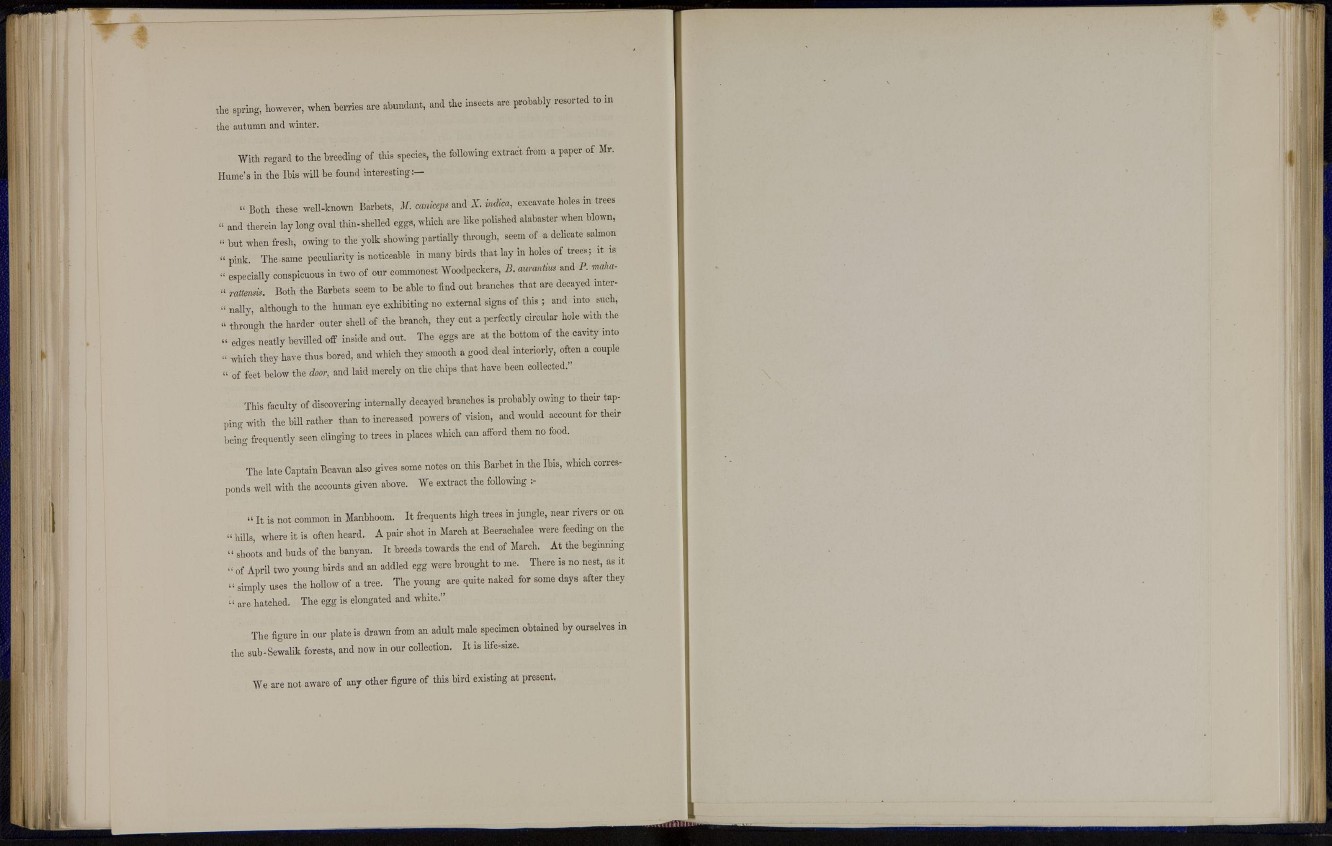
the spring, however, when berries are abundant, and the insects are probably resorted to in
the autumn and winter.
With regard to the breeding of this species, the following extract from a paper of Mr.
Hume's in the Ibis will be found interesting:—
" Both these well-known Barbets, M. caniceps and A', indica, excavate holes in trees
" and therein lay long oval thin-shelled eggs, which are like polished alabaster when blown,
" b u t when fresh, owing to the yolk showing partially through, seem of a delicate salmon
" pink. The same peculiarity is noticeable in many birds that lay in holes of trees; it is
" especially conspicuous in two of our commonest Woodpeckers, B. aurantius and P. maha-
" rattensis. Both t h e Barbets seem to be able to find out branches that are decayed inter-
" nally, although to the human eye exhibiting no external signs of tins ; and into such,
" through the harder outer shell of the branch, they cut a perfectly circular hole with the
" edges neatly bevilled off inside and out. The eggs are at the bottom of the cavity into
" which they have thus bored, and which the}' smooth a good deal interiorly, often a couple
" of feet below the door, and laid merely on the chips that have been collected."
This faculty of discovering internally decayed branches is probably owing t o their tapping
with the bill rather than t o increased powers of vision, and would account for their
being frequently seen clinging to trees in places which can afford them no food.
The late Captain Beavan also gives some notes on this Barbet in the Ibis, which corresponds
well with the accounts given above. We extract the following :-
" I t is not common in Manbhoom. It frequents high trees in jungle, near rivers or on
"• hills, where i t is often heard. A pair shot in March at Beerachalee were feeding on the
" shoots and buds of the banyan. It breeds towards the end of March. At the beginning
•• of April two young birds and an addled egg were brought to me. There is no nest, as it
' ' simply uses the hollow of a tree. The young are quite naked for some days after they
•l are hatched. The egg is elongated and white."
The figure in our plate is drawn from an adult male specimen obtained by ourselves in
the sub- Sewalik forests, and now in our collection. It is life-size.
We are not aware of any other figure of this bird existing a t present.